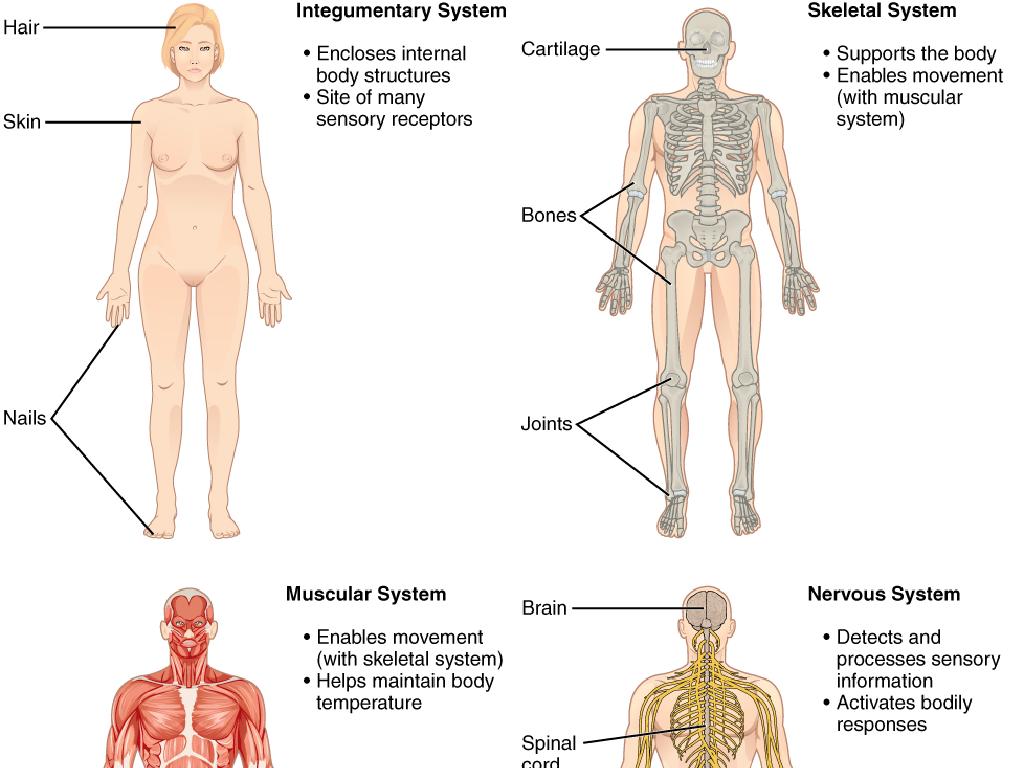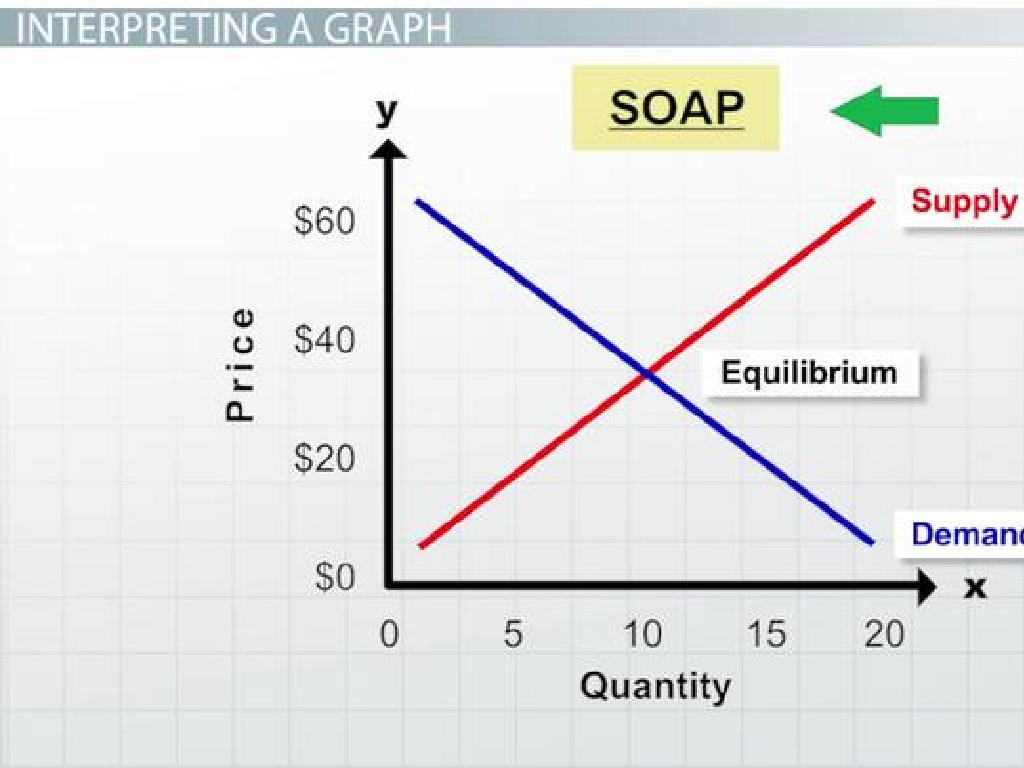Is It A Complete Sentence Or A Fragment?
Subject: Language arts
Grade: Seventh grade
Topic: Sentences, Fragments, And Run-Ons
Please LOG IN to download the presentation. Access is available to registered users only.
View More Content
Introduction to Sentences
– Exploring writing building blocks
– Writing is built from words, phrases, clauses.
– Defining a complete sentence
– A complete sentence has a subject, verb, and expresses a complete thought.
– Why proper structure matters
– Proper structure improves clarity and communication.
– Recognizing sentence fragments
– Fragments lack subjects/verbs or don’t express complete thoughts.
|
This slide introduces students to the fundamental elements of writing, emphasizing the importance of complete sentences for effective communication. Begin by discussing the basic building blocks of writing, including words, phrases, and clauses. Then, define what constitutes a complete sentence, highlighting the necessity of a subject and a verb, and the expression of a complete thought. Explain why proper sentence structure is crucial for clarity and understanding in writing. Finally, help students identify sentence fragments by showing examples that lack either a subject or a verb or do not express a complete thought. Use interactive examples to engage the class and reinforce learning.
What Makes a Sentence Complete?
– Essential subject-verb agreement
– Every sentence needs a subject (who or what) and a verb (action).
– Expression of a complete thought
– A sentence must also express a full idea that can stand alone.
– Examples of complete sentences
– ‘The dog barked loudly.’ has both a subject (the dog) and a verb (barked).
– Identifying sentence fragments
– Fragments lack a subject/verb or complete thought, e.g., ‘Running fast.’
|
This slide introduces the concept of complete sentences to the students. Emphasize the importance of subject-verb agreement as the foundation of a sentence. Discuss how a complete thought is necessary for a sentence to be understood on its own. Provide clear examples of complete sentences and contrast them with fragments to highlight the differences. Encourage students to create their own sentences and identify whether they are complete or fragments. This will prepare them for identifying and correcting sentence fragments in their writing.
Identifying Sentence Fragments
– Definition of a fragment
– An incomplete sentence missing key elements
– Common causes of fragments
– Missing subjects, verbs, or complete thoughts
– Examples of fragments
– ‘Although she ran fast.’ What’s missing?
|
This slide aims to help students distinguish between complete sentences and fragments. A fragment is an incomplete sentence that lacks either a subject, a verb, or a complete thought, making it unable to stand alone. Common causes include dependent clauses treated as complete sentences or sentences missing a subject or verb. Provide examples of fragments and ask students to identify what’s missing to make them complete. Encourage students to look for these in their writing and practice correcting fragments by adding the necessary components. This understanding is crucial for clear written communication.
Activity: Sentence or Fragment?
– Learn to identify sentences and fragments
– Practice with provided examples
– Examples: ‘The dog barked loudly.’ (Sentence) ‘During the night.’ (Fragment)
– Discuss in groups the reasoning
– Why does ‘The dog barked loudly.’ stand as a complete thought?
– Share findings with the class
– Each group will explain their conclusions.
|
This activity is designed to help students distinguish between complete sentences and fragments. A complete sentence must have a subject, a verb, and express a complete thought, while a fragment lacks one or more of these components. Provide students with a mix of sentences and fragments to practice on. After individual work, they will discuss in small groups why each example is a sentence or a fragment, focusing on the presence of a subject and verb and whether a complete thought is expressed. This peer discussion reinforces learning and allows students to hear different perspectives. Conclude with a class discussion where groups share their findings, ensuring that each student can identify and correct fragments in their writing.
Fixing Fragments: Crafting Complete Sentences
– Understanding sentence fragments
– A fragment lacks a subject, verb, or complete thought.
– Methods to complete a fragment
– Add missing elements to make a full sentence.
– Practice: Rewrite sentence fragments
– Use examples to turn fragments into complete sentences.
– Share and discuss corrections
– Exchange ideas to learn from peers.
|
This slide aims to teach students how to identify sentence fragments and transform them into complete sentences. A sentence fragment is an incomplete sentence that lacks a main subject, verb, or complete thought. To fix a fragment, students should first identify what’s missing and then add the necessary components. During practice, students will work on examples of fragments and rewrite them as complete sentences. Encourage students to be creative and come up with more than one way to complete a sentence. Afterward, they’ll have the opportunity to share their corrections with the class, fostering a collaborative learning environment where they can learn from each other’s insights and approaches.
Run-ons: Recognizing What to Avoid
– Define run-on sentences
– A run-on sentence contains two or more independent clauses incorrectly joined.
– Identify examples of run-ons
– ‘I love to write papers I would write one every day if I had the time.’
– Understand why run-ons are problematic
– Run-ons can confuse readers and obscure the meaning of the text.
– Learn how to fix run-ons
– Use punctuation or conjunctions to separate clauses correctly.
|
This slide aims to help students identify and correct run-on sentences, which are a common mistake in writing. A run-on sentence occurs when two or more independent clauses are joined without proper punctuation or conjunction. Provide clear examples to illustrate what run-on sentences look like. Discuss why avoiding run-ons is crucial for clarity and coherence in writing. Teach students strategies to fix run-ons, such as using a period to separate clauses into two sentences or using a comma with a coordinating conjunction. Encourage students to practice identifying run-ons in their writing and to apply these strategies to improve their sentence structure.
Correcting Run-on Sentences
– Understanding run-on sentences
A run-on sentence contains two or more independent clauses incorrectly joined.
– Methods to fix run-ons
Use punctuation or conjunctions to separate the clauses correctly.
– Using conjunctions and punctuation
Conjunctions like ‘and’, ‘but’, or ‘so’ can join clauses with a comma before them.
– Practice activity: Correct run-ons
We’ll practice identifying and correcting run-ons in sentences.
|
This slide aims to teach students how to identify and correct run-on sentences, which are common mistakes in writing. Run-on sentences occur when two independent clauses are joined without proper punctuation or conjunctions. Students will learn to use periods, semicolons, and commas with conjunctions to separate these clauses. The practice activity will involve correcting sentences provided by the teacher. This will help students apply the methods they’ve learned to improve sentence structure. Encourage students to explain why a sentence is a run-on and how they fixed it, reinforcing their understanding of the concept.
Class Activity: Sentence Workshop
– Split into groups for sentence review
– Identify sentences, fragments, run-ons
– Determine if each example is a complete idea
– Correct the fragments and run-ons
– Use conjunctions, punctuation to fix errors
– Present findings to the class
|
This interactive class activity is designed to help students understand the structure of complete sentences versus fragments and run-ons. Divide the class into small groups and provide each with a set of examples containing complete sentences, fragments, and run-ons. Students will collaborate to identify each type and make corrections where necessary. After the activity, each group will present their corrected sentences and explain the reasoning behind their decisions. This will reinforce their understanding and provide an opportunity for peer learning. As a teacher, facilitate the discussions, provide guidance on sentence structure, and ensure that each group understands the concepts of subject-verb agreement, complete thoughts, and proper punctuation. Offer examples like ‘The dog barked loudly’ (complete), ‘Running in the park’ (fragment), and ‘She loves to swim she goes every day’ (run-on).
Wrapping Up: Sentences vs. Fragments
– Recap: Complete sentences & fragments
– Remember, a complete sentence has a subject and a verb and expresses a complete thought.
– Clear writing is effective communication
– Writing clearly helps convey your message without confusion.
– Homework: Diary entry with proper sentences
– Write a diary entry using what you’ve learned about sentence structure.
– Share your diary entry next class
– Be prepared to discuss how you used complete sentences in your writing.
|
As we conclude today’s lesson, remind students of the key differences between complete sentences and fragments. Emphasize the importance of clear writing in effective communication. For homework, students are to write a diary entry ensuring they use correct sentence structure, applying what they’ve learned. This exercise will help reinforce their understanding of the material. In the next class, we’ll share and discuss these diary entries to highlight the practical application of writing complete sentences in daily life.






